
Yakuza 6 Review
It's been ten years since the Dragon of Dojima first walked the streets of Kamurocho and Yakuza 6: The Song of Life puts us in his shoes for the final time. The North American and European versions of the game come a little over a year after the original Japanese launch. Despite having played Yakuza 6 shortly after its initial release over in Japan, I was eagerly anticipating its localization and couldn’t wait to revisit it.
And my verdict? Yakuza 6: The Song of Life does not disappoint. This review does contain very minor spoilers to establish how Yakuza 6 begins. You've been warned!
Yakuza 6: The Song of Life takes place in 2016 - three years after the end of Yakuza 5. The game opens on the previous installment's final scene and the plot continues from there. For those unfamiliar with any of the Yakuza games before this, I strongly recommend playing the other mainline games before approaching Yakuza 6; their stories are all directly connected to the conclusion of Kiryu's tale. While the main menu does have an option to read synopses of the previous games, they pale in comparison to experiencing those stories first-hand.
After being released from prison following the end of Yakuza 5, Kiryu returns to the Morning Glory Orphanage (previously localized as the Sunshine Orphanage in previous installments) three long years later. Familiar faces first seen in Yakuza 3 greet him in an incredibly emotional reunion. However, Haruka is nowhere to be found. This sets off the series of events that puts Yakuza 6: The Song of Life’s story into motion.
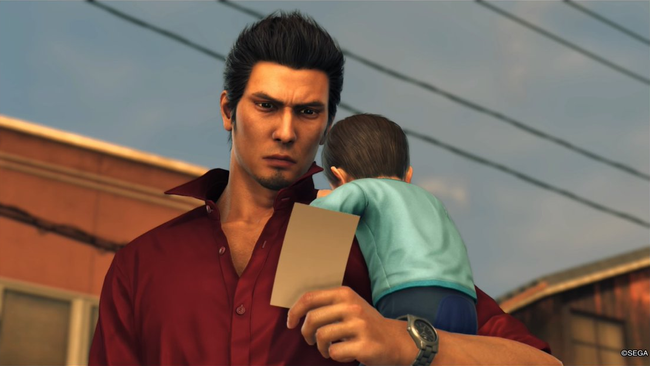
Kiryu is forced to return to Kamurocho to look for Haruka, only to discover that she's currently being hospitalized due to a hit-and-run. Haruka wasn't the only victim; she was protecting something with her life - a baby. The mystery of who fathered the child takes center stage and Kiryu’s search for the father leads him to Onomichi where he quickly becomes involved in uncovering the dark secrets hidden behind this picturesque city.
The overarching plot of the game deals heavily with the relationships between parents and their children - both blood related and not. Mixed into this are several conspiracies and other mysteries interwoven into the story. Yakuza 6's narrative holds its pace quite well, with the exception of a few over-dramatic scenes that feel like they belong more in an overproduced Japanese drama than in a Yakuza title. At times, the localization disappoints and perplexes. Deep in the game when you visit Kamurocho, you're introduced to a certain new character - and having played the original Japanese version of the game, I'm left disappointed by his portrayal in the English localization.
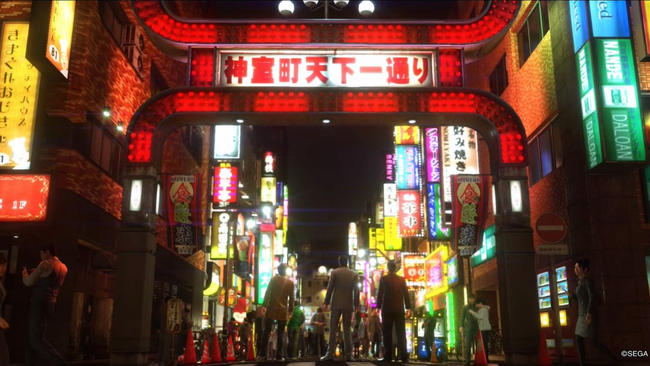
This is a difficult issue to cover without getting into spoilers but suffice to say, this is a character who comes across completely differently than in the original language thanks to the nature of the translation - so differently that the localization completely changed my feelings on this particular character. Essentially, it feels like too many liberties have been taken; in search of being funny and wry, the localization occasionally takes it too far. It soured my experience, though not everyone will be privy to these changes obviously. Despite this, the resolution left me close to tears and I still found a great amount of satisfaction in the story as it came to a close even after replaying it almost over a year later.
Optional content is spread between the two major cities of Kamurocho and Onomichi, though a majority of the substories lack the substance found in previous titles. Some do have incredibly memorable moments and definitely provide the player with some cultural context surrounding what it means to be an idol, and so forth. While they’re still very much enjoyable, it’s clear that the “Troublr” missions that appear at random are meant to occupy the spaces left by a lack of abundance in these often absurdist stories. This new gameplay mechanic sends Kiryu a text message which can be viewed on his phone, prompting a random mission to appear on the map. Most are fetch quests, eliminating a pack of enemies, or a suspicious individual on a marked area of your map that have no real significance behind them. They seem to serve no other purpose than to reward the player with a meager amount of experience points to put towards leveling.
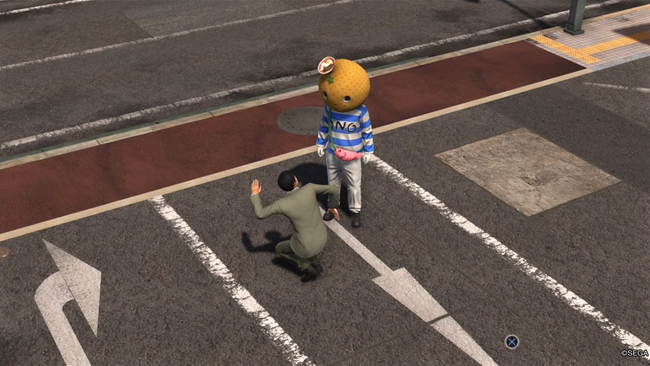
This can also be said for the mini-games in Yakuza 6: The Song of Life. Previous installments have always had an abundance of mini-games ranging from Hostess Clubs, baseball, arcades games, and more. While Yakuza 6 does have all of these with a few new additions thrown into the mix, they lack the substance or character found in the other titles - the Hostess Club especially. Conversation is limited to selecting a few cards that continually recycle themselves, making the experience dry in comparison to the more recently localized Yakuza 0 and Yakuza Kiwami. This is most definitely due to Snack Gaudi now providing a bulk of the more meaningful interaction, but I'm left let-down in the lack of personality a lot of the Hostesses seemed to exhibit this time around.
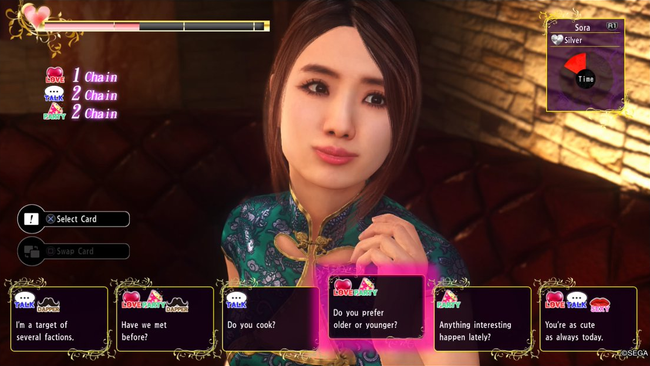
Despite my qualms, I had an enjoyable time spearfishing off the coast of Onomichi with its nifty rail shooter mini-game. I also ran around with my pockets full of canned cat food to scope out potential cats for the Nyan Nyan Cafe in Kamurocho. Furthermore, I sunk a load of time into the Clan Creator system that basically functions like a real-time strategy game - but this was mostly to generate a source of income to keep premium cat food constantly in my inventory or hang out at the arcade.
While the Clan Creator itself is pretty fun, I absolutely steamrolled the opposition the moment I redeemed the Clan Creator codes hidden in their official Yakuza game site via their Yakuza Experience portal. However, getting the chance to face off against some familiar faces in the NJPW was a blast and the unique story for this mini-game was decently done as well.
The transition to the new Dragon Engine in Yakuza 6 makes both locales look absolutely stunning both during the day and late evenings, though it comes at a cost. While it does lock Yakuza 6: The Song of Life to 30 FPS alongside occasional screen-tearing, it didn't detract me from the game itself in any major way. The environments have been carefully recreated to match their real-life counterparts and only adds to the experience and exploration of these areas.
I spent a large amount of time wandering around Onomichi after hours to snap pictures of dimly lit alleyways found in this sleepy little town. Unfortunately, some of Kamurocho is locked off. Most notably, the Champion's District and Hotel District are inaccessible in Yakuza 6, along with the underground area of Shangri-La.
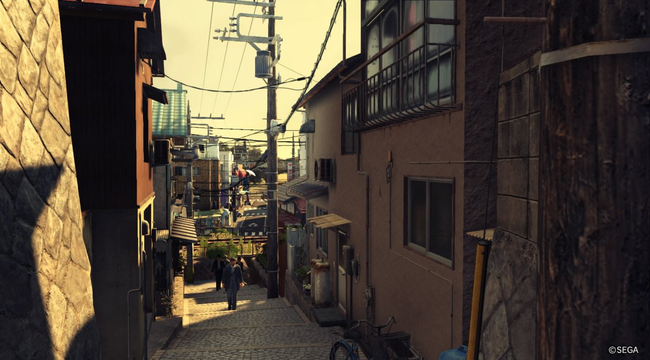
Severe changes to the combat system have also been made concerning the switch to the Dragon Engine. Kiryu reverts back to a single style in Yakuza 6 to dispatch gangs of bothersome thugs. It's reminiscent of the system found in earlier Yakuza titles where points are distributed to certain attributes to further unlock Heat Moves, Combat Moves, and Optional Traits.
Players can choose what statuses they’d like to level up first and they can now also see the prerequisite for certain moves or attributes, allowing for better stat allocation during progression. Being able to see what skills I wanted to unlock and what the prerequisites were made it a lot easier to prepare for boss fights that otherwise would have halted progression later in the game. I took advantage of this and made use of the new RIZAP mini-game which rewards players with a large amount of experience for following their training regimen at the gym and suggested diet. It’s a pretty unique and involved feature, but I really grew to love it and scoured both Kamurocho and Onomichi for the best meal to get the largest reward possible.
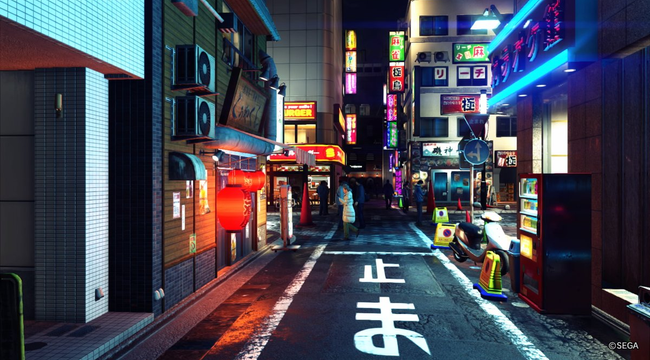
There are some minor collision issues here and there (like bikes flying or bursting into pieces if Kiryu sprints into them for too long), though they weren’t enough to break my immersion or leave me with any bad impression regarding this switch. The only really noticeable thing was a change in animations from previous games. Kiryu is very much a man of his age, his usual combo string changing to a charge attacked and his punches a little slower and more deliberate this time around. I appreciated this level of detail put into the intricate combat system.
In the end, I found my experience with Yakuza 6: The Song of Life to be incredibly satisfying when everything came together. The final chapter in the story of the Dragon of Dojima was a compelling experience and remained just that even a year after the original release. Yakuza 6: The Song of Life has an incredibly bittersweet ending, and the narrative twists and turns that brought me there, left me feeling satisfied with the close of Kazuma Kiryu’s story.